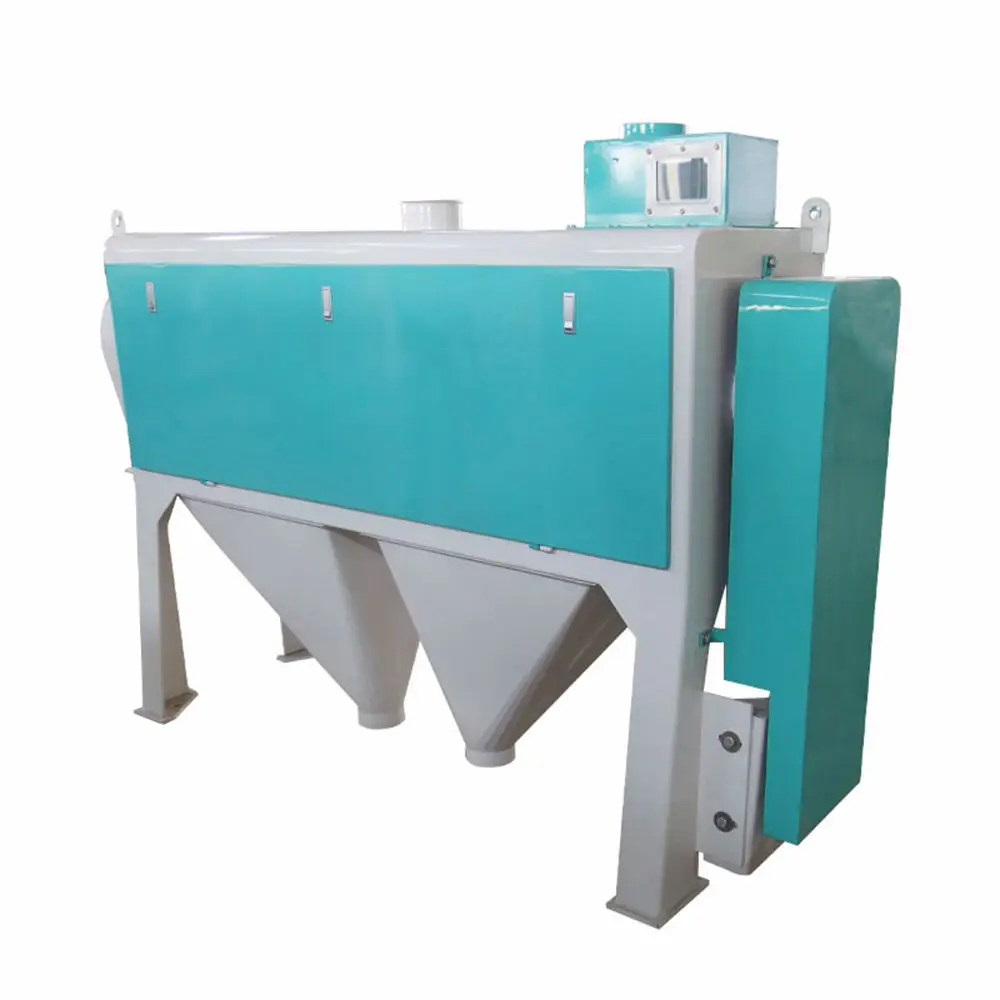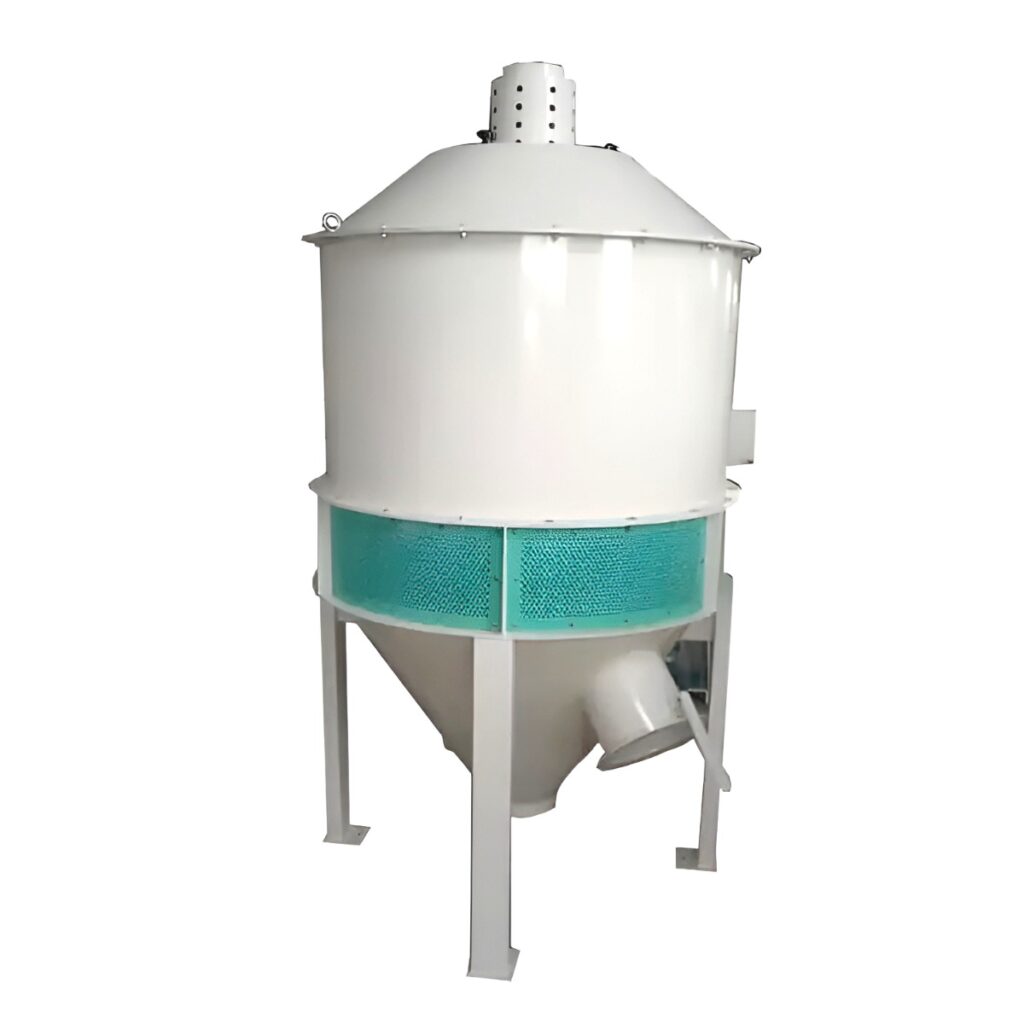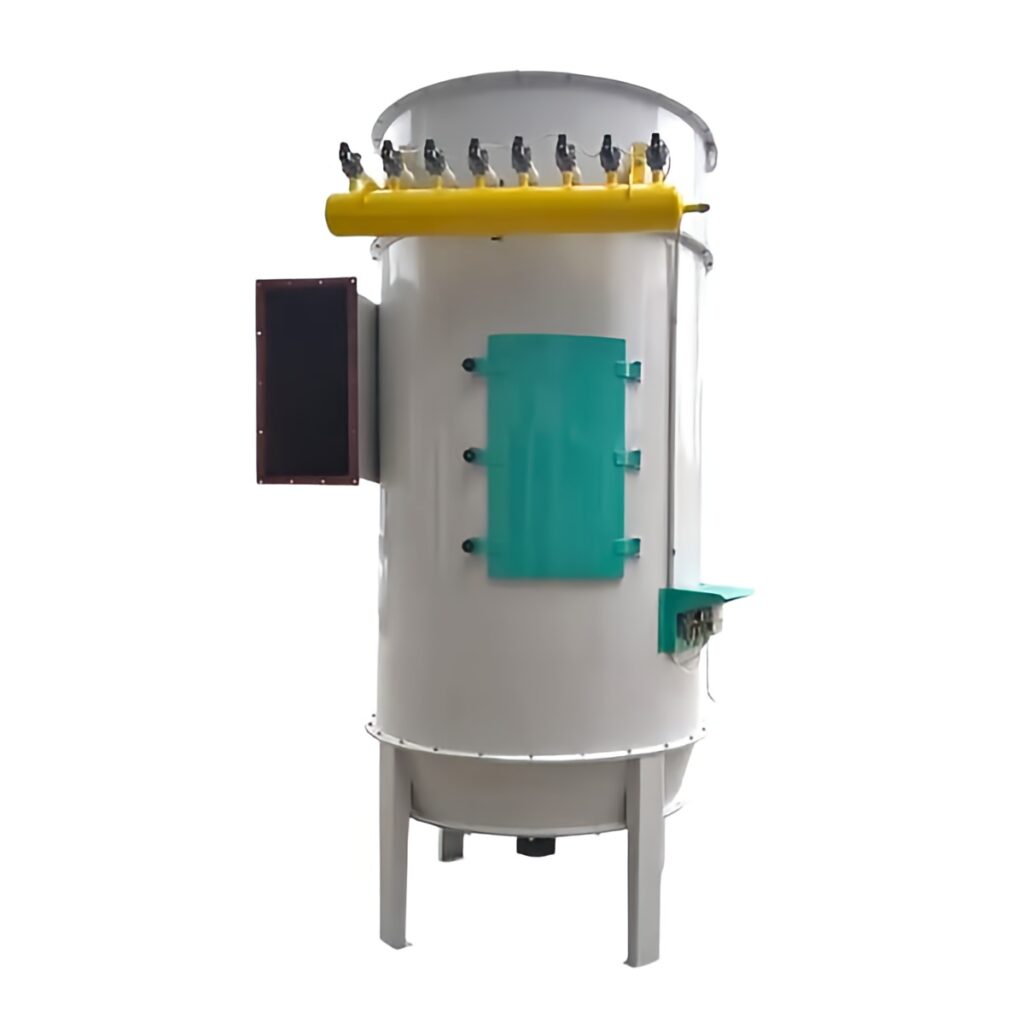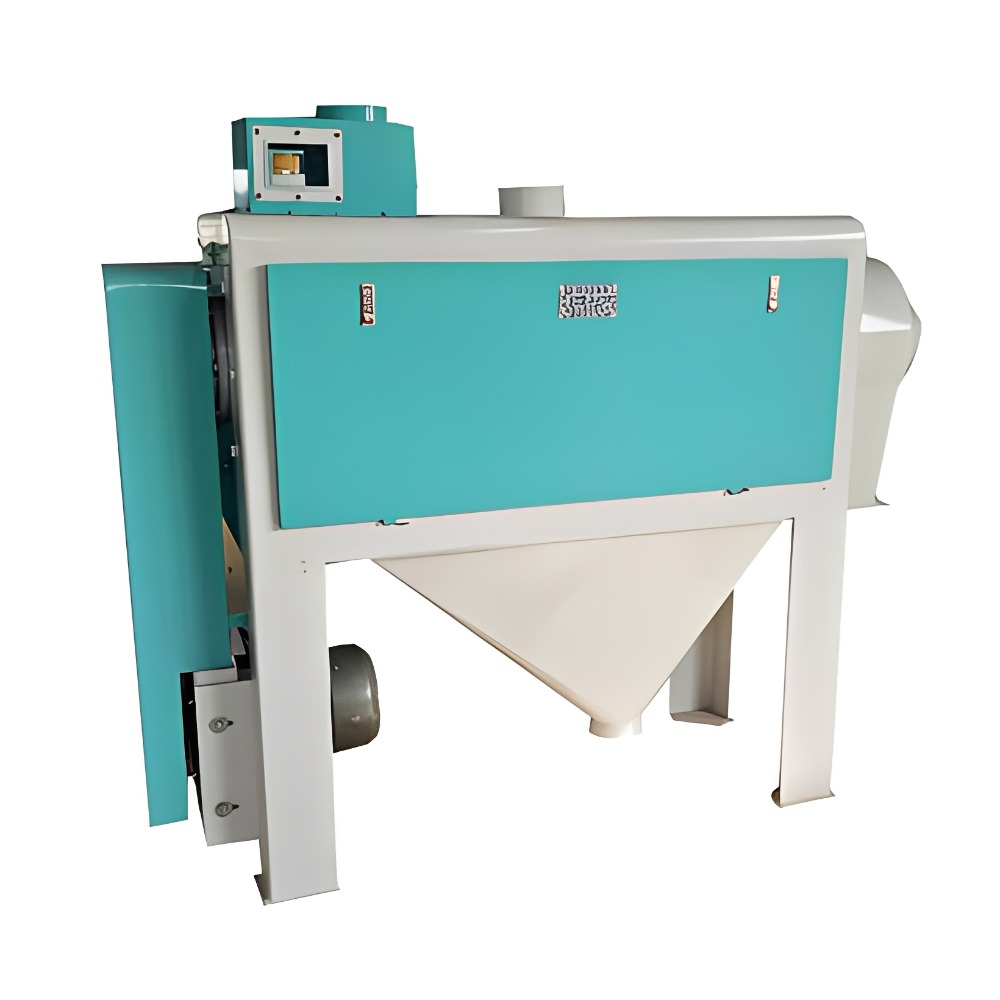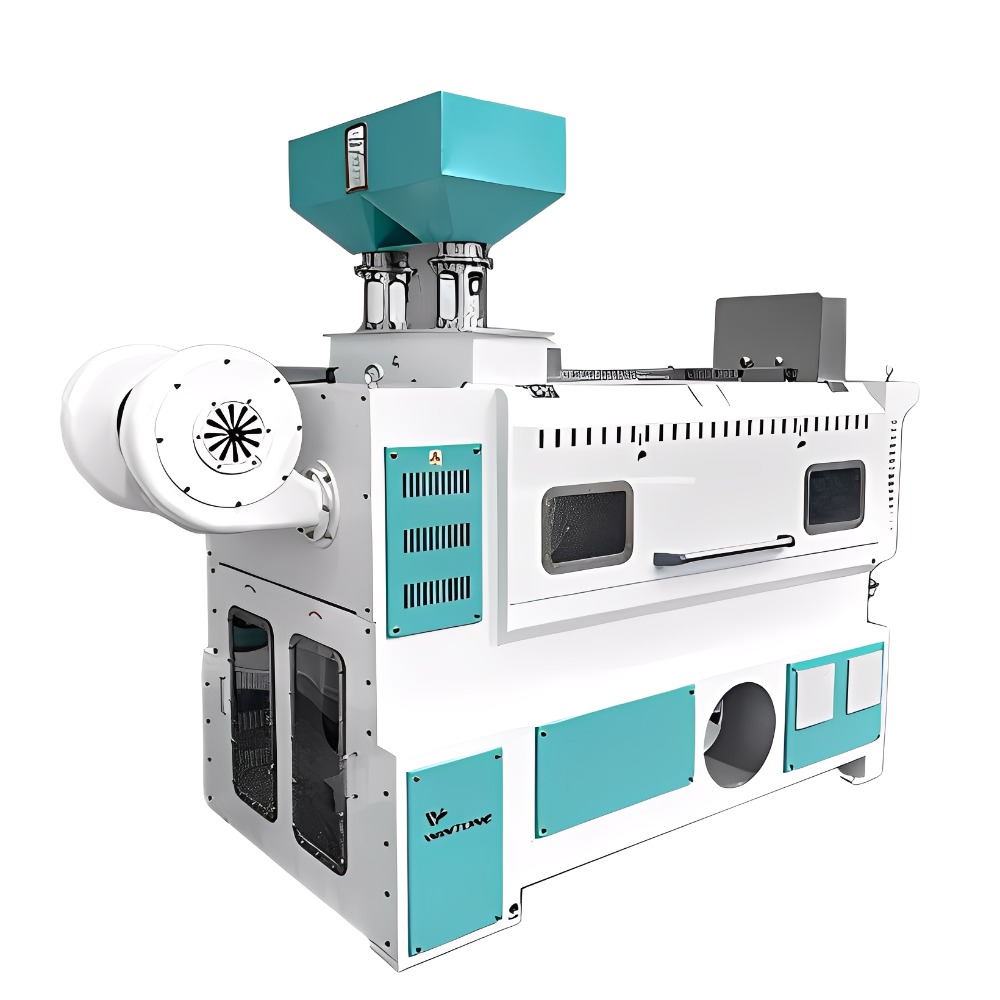Purpose and Function
The main objective of using a scourer is to significantly improve the hygiene and quality of the grain before it enters the mill rolls. This is achieved by intensely brushing and scrubbing the surface of the wheat kernels.
Key functions include:
- Removing Surface Impurities: The scourer effectively detaches and removes foreign materials that adhere to the wheat kernel’s surface and reside in its deep crease (or “belly-groove”). These impurities include dust, sand, soil, mud, and light contaminants like chaff.
- Stripping Wheat Hairs (Trichomes): It thoroughly removes the fine, silky hairs (trichomes) found at the brush end of the wheat kernel. If these hairs are not removed, they can mix with the flour, negatively impacting its ash content and color.
- Reducing Microorganisms and Pests: By scrubbing the surface, the machine reduces the load of bacteria, fungal spores, and insect fragments/eggs, contributing significantly to overall food safety.
- Preparing for Conditioning: The scouring action slightly roughens the grain surface, which can sometimes aid in the subsequent tempering or conditioning process (adding moisture before milling) by improving water absorption.
Working Principle
The scourer operates based on a principle of friction and impact:
- Feeding: Wheat is fed into the machine’s casing.
- Scouring Action: A high-speed rotating rotor equipped with beaters or paddles throws the grains outward against a stationary sieve jacket (screen cylinder) and fixed segments.
- Friction: The grains intensely rub against each other (grain-to-grain friction) and against the internal fixed and rotating metal surfaces (grain-to-metal friction).
- Discharge: This violent friction effectively dislodges surface impurities and wheat hairs, which are then either forced through the screen or are immediately removed by a dedicated aspiration system (air suction) integrated with the scourer.
In summary, the scourer is essential for maximizing the sanitary quality and purity of the flour by delivering a clean, pre-treated kernel to the milling section.
